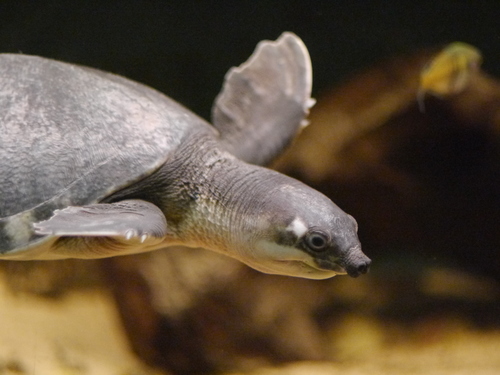
Pig-nosed Turtle
The Pig-nosed Turtle, with its distinctive snout and flipper-like limbs, glides through the freshwater habitats of Australia and New Guinea. This unique turtle plays a vital role in its ecosystem by dispersing seeds and maintaining aquatic vegetation balance.
30-40 years
Lifespan
19.958 kg
Weight
Length: 71 - 76 cm
Size
Grey, Cream, Olive
Color
16-18
Age of Sexual Maturity
High
Aggression
Characteristics
The Carettochelys insculpta, commonly known as the Pig-nosed Turtle, inhabits freshwater rivers and streams of northern Australia and southern New Guinea. Notably, it possesses a unique pig-like snout and flipper-like limbs, unlike any other freshwater turtle. It is predominantly herbivorous, feeding on aquatic vegetation and fruit.
Distribution Range of the Pig-nosed Turtle
Carettochelys insculpta, commonly known as the pig-nosed turtle, is native to northern Australia and southern New Guinea. In Australia, it is primarily found in the Northern Territory, while in New Guinea, it occupies regions in both Papua New Guinea and the Indonesian part of New Guinea.
Pig-nosed Turtle's Habitat
Environmental Conditions
The pig-nosed turtle inhabits freshwater environments such as rivers, lakes, and lagoons. These water bodies are typically slow-moving and have a muddy or sandy bottom. The climate in these regions is tropical, characterized by a wet season, where heavy rainfall can cause flooding, and a dry season.
Ecological Niche
Carettochelys insculpta is an aquatic species that has adapted to living in water for most of its life. It is an omnivore, feeding on a variety of plant materials, fruits, and small animals. The species plays a role in the aquatic ecosystem as both a consumer of vegetation and small aquatic organisms, and as prey for larger predators. During the breeding season, females leave the water to lay eggs in sandy or muddy banks, which are crucial for the survival of the species.
Copyright @ Nature Style Limited. All Rights Reserved.
 English
English